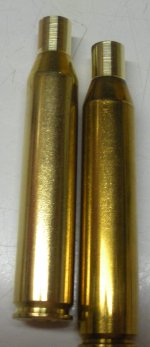antelopedundee
internet bum
Just got some items for Sinclair neck turning. For now I'll be sticking to .25-06 and 6.5-06 cases. To set up the die with an expander mandrel I assume to run a case all the way to the top of the press stroke and screw the die[sans mandrel] down until it contacts the case mouth and back off a turn or 2.
With the NT-1000 turner is there a preferred setting of the mandrel as a stop so that all cases get turned the same? Like the shoulder on the mandrel being flush with the inner surface of the turner body? Or as I expect, some trial and error rules the day? I'll be setting up the unit with some junk cases.
With .256 or .263 neck expansion, would you resize to a smaller neck diameter for hunting type loads or just use as is?
With the NT-1000 turner is there a preferred setting of the mandrel as a stop so that all cases get turned the same? Like the shoulder on the mandrel being flush with the inner surface of the turner body? Or as I expect, some trial and error rules the day? I'll be setting up the unit with some junk cases.
With .256 or .263 neck expansion, would you resize to a smaller neck diameter for hunting type loads or just use as is?


